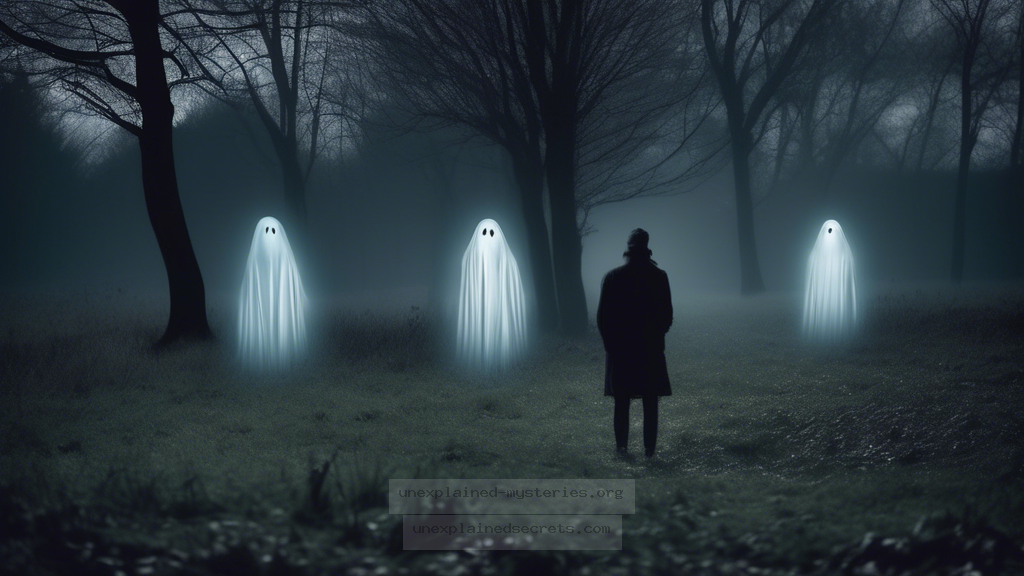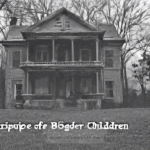What Can the Most Documented Ghost Sightings Tell Us About the Nature of Reality?
What Can the Most Documented Ghost Sightings Tell Us About the Nature of Reality?
The phenomenon of ghost sightings has puzzled humanity for centuries, raising questions about the nature of existence, consciousness, and the afterlife. With countless accounts documented through history, these sightings often leave us wondering: Are they mere figments of imagination or glimpses into a reality beyond our comprehension? Understanding these events can help us investigate the interplay between the physical and metaphysical realms, and perhaps even reveal insights into our own lives. In this blog post, we will explore the most compelling documented ghost sightings, the theories surrounding them, and what they might mean for our understanding of reality.
Historical Context of Ghost Sightings
Ghost sightings are not a modern phenomenon; they have been reported throughout history across various cultures and societies. Ancient civilizations often had their own interpretations of spirits and the afterlife, as seen in Egyptian tomb paintings depicting the deceased’s journey, or Greek mythology where spirits roamed the earth. The Middle Ages saw a surge in ghost stories, often tied to religious beliefs and fear of the afterlife. In folklore, ghosts were frequently viewed as restless souls seeking resolution or vengeance.
One of the earliest recorded ghost sightings comes from the Roman historian Pliny the Younger, who described a haunted house in Athens where a ghost appeared in chains. This account, dating back to the first century, set the stage for centuries of ghostly narratives. In contrast, the 19th and 20th centuries witnessed a significant rise in ghost sightings due to the advent of Spiritualism, which claimed that the dead could communicate with the living. The Fox Sisters, for example, gained notoriety for their purported ability to communicate with spirits, leading to a widespread belief in ghostly encounters. Today, ghost sightings continue to be reported, showcasing a persistent fascination with what lies beyond death.
Core Concepts: What Are Ghosts?
Ghosts are generally defined as the spirit or soul of a deceased individual that appears to the living. However, the concept varies widely depending on cultural and spiritual beliefs. In Western traditions, a ghost is often seen as a conscious entity, capable of interacting with the living world. In contrast, some Eastern philosophies view spirits more as manifestations of energy rather than individual personalities.
There are several types of ghosts often categorized in paranormal studies:
- Intelligent Spirits: These are believed to be the souls of deceased individuals who can communicate with the living.
- Residual Hauntings: These are thought to be recordings of past events that replay in a specific location without interaction.
- Poltergeists: Often associated with physical disturbances, such as objects moving or noises, these are considered mischievous spirits.
- Elementals: Spirits tied to nature or specific elements, believed to exist independently of human influence.
Documented Cases of Ghost Sightings
Some ghost sightings have gained notoriety due to their compelling nature and the detailed accounts provided. Here are a few notable examples:
- The Amityville Horror: Perhaps one of the most famous hauntings in America, this case involves a family who reported terrifying experiences in their home in Amityville, New York, leading to questions about the tragic events that had occurred there previously.
- The Brown Lady of Raynham Hall: This sighting, captured in a famous photograph in 1936, depicts a ghostly figure descending a staircase. The identity of the ghost is believed to be Lady Dorothy Walpole, who died under mysterious circumstances.
- The Enfield Poltergeist: This case from the late 1970s in England involved a family experiencing unexplained phenomena, including furniture moving and strange noises. The case was investigated by paranormal researchers and remains one of the most documented in British history.
Practical Implications of Ghost Sightings
The implications of ghost sightings extend beyond mere fascination. They challenge our understanding of life, death, and consciousness. For many, the idea that consciousness can persist beyond physical existence presents a profound shift in how we view mortality. Additionally, ghost sightings often carry emotional weight for those involved, providing closure or unresolved feelings regarding loved ones who have passed away.
From a psychological perspective, ghost sightings can be linked to the human mind’s need for meaning and connection, especially after experiencing loss. The desire to maintain a bond with deceased loved ones can lead individuals to interpret experiences in a way that aligns with their beliefs about the afterlife. This suggests that ghost sightings may not only reflect external realities but also internal emotional landscapes.
Theories Explaining Ghost Sightings
Various theories seek to explain ghost sightings, ranging from the psychological to the scientific. Here are some of the most prevalent theories:
- Psychological Theories: Some researchers propose that ghost sightings arise from the brain’s interpretation of stimuli, particularly in emotionally charged situations. For example, grief can lead to heightened sensitivity to environmental factors, resulting in the perception of a ghostly presence.
- Environmental Factors: Infrasound (sound waves below the frequency of human hearing) has been linked to feelings of unease and hallucinations. Certain locations, such as abandoned buildings, may produce these sound frequencies, potentially leading to ghost sightings.
- Electromagnetic Fields (EMF): Some suggest that fluctuations in EMF can influence human perception and may cause sensations associated with ghostly encounters. Investigators often use EMF detectors when exploring haunted locations.
- Quantum Theories: Some fringe theorists argue that the principles of quantum mechanics might allow for the existence of parallel dimensions or realities, where spirits could exist. While this theory is highly speculative, it opens up intriguing discussions about the nature of existence.
Alternative Perspectives on Ghost Sightings
While many people ascribe to the belief in ghosts, alternative perspectives challenge these beliefs. Skeptics often argue that ghost sightings can be explained through rational means, such as psychological phenomena or environmental factors. They emphasize the need for critical thinking and scientific inquiry when investigating paranormal claims.
In recent years, the rise of technology has also altered how we approach ghost sightings. The advent of digital cameras, smartphones, and audio recording devices has allowed for easier documentation of alleged ghostly encounters. However, skeptics warn that technology can also mislead, as images and sounds can be manipulated or misinterpreted.
Common Misconceptions About Ghost Sightings
Despite the wealth of information available, several misconceptions about ghost sightings persist:
- All Ghosts Are Malevolent: While some ghost stories involve frightening encounters, many sightings involve spirits seeking to communicate or offer comfort.
- Ghosts Only Appear at Night: Ghost sightings can occur at any time of day. Many reports document daytime encounters, often in well-lit environments.
- All Ghosts Are Visible: Some spirits may not manifest as visible apparitions; they might instead communicate through sounds or other sensory experiences.
Clarifying these misconceptions is vital for a more nuanced understanding of ghost sightings and their implications.
Best Practices for Investigating Ghost Sightings
For those interested in investigating ghost sightings, a systematic approach is essential. Here are some best practices to consider:
- Document Everything: Keep detailed notes of experiences, including time, location, and environmental conditions. Photographs and recordings can also aid in analysis.
- Work in Teams: Collaborating with others can provide diverse perspectives and help reduce bias. It also allows for shared experience during investigations.
- Use Technology Wisely: Employ tools like EMF detectors, infrared cameras, and digital voice recorders to gather data. However, be cautious of over-reliance on technology, as it can lead to misinterpretations.
- Respect the Location: Many alleged hauntings occur in sensitive or historical sites. Approach investigations with respect and consideration for the location’s significance.
Future Developments and Ongoing Research
The field of paranormal investigation continues to evolve, with ongoing research exploring the nature of ghost sightings and their implications. Advances in technology, such as virtual reality and enhanced imaging techniques, may provide new insights into ghostly phenomena. Additionally, interdisciplinary approaches that combine psychology, physics, and cultural studies could lead to a more comprehensive understanding of these experiences.
As society becomes increasingly open to exploring the unknown, ghost sightings may continue to garner interest, prompting further inquiry into the mysteries of existence and the afterlife.
Conclusion
Ghost sightings remain one of the most captivating mysteries of human experience, bridging the gap between the known and the unknown. Through historical context, documented cases, core concepts, and ongoing research, we begin to unravel the complexities surrounding these phenomena. Whether viewed through the lens of belief, skepticism, or scientific inquiry, ghost sightings challenge our understanding of reality and provoke profound questions about life, death, and what may lie beyond. As we continue to explore these mysteries, we may uncover truths that not only deepen our understanding of the afterlife but also enhance our appreciation of life itself.
Other Articles
Recent Posts
- What Happened to Flight MH370? The Conspiracy Theories That Still Haunt Us
- What Secrets Lurk Within the Walls of the Infamous Trans-Allegheny Lunatic Asylum?
- What Evidence Supports the Existence of Bigfoot in the Pacific Northwest?
- What Happened to the Indus Valley Civilization? Unraveling the Mysteries of Ancient Urban Life
- Can Telepathy Be Scientifically Proven Through Laboratory Evidence?







